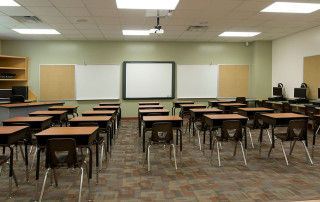The Colorado Futures Center is an independent, nonpartisan and academically grounded 501(c)(3) organization dedicated to informing about economic, fiscal and public policy issues impacting community economic health and quality of life in Colorado and beyond.
Social Factors of Academic Success
Social factors matter in academic success. This research, commissioned by the Colorado State University system office, identifies the social factors most highly associated with academic success in Colorado’s young learners.
The findings and policy recommendations are available here.
Media Response
CODI: The Disproportionate Impact Indicator
On December 13, CFC along with its partners The Colorado Energy Foundation and Civic Innovators introduced CODI, the disproportionate impact indicator. View the presentation slides here.
The Colorado Energy Foundation is firmly committed to community partnership and investment that is targeted and tailored to the unique needs of each community. To achieve this, the CEF has partnered with the Colorado Futures Center at Colorado State University to develop an interactive map that enables user to view multiple layers of data at the census tract level. The Colorado Disproportionate Impact Indicator (CODI Indicator) was developed and informed by a diverse group of nonprofit service providers, with data layers strategically prioritized to provide a comprehensive view of each community in Colorado and inform a greater understanding of relative need.
This online, interactive tool examines the intersection of several dimensions of community needs and builds on our understanding that challenges – and solutions – never happen in an isolated silo. The upstream determinants of equity are grounded in basics needs such as housing, food access, health care and affordable energy, while economic mobility and self-sufficiency requires investments in education and workforce development. All of these variables are interwoven and must be understood as a whole to create a unique profile of opportunity in each community.
Housing Affordability Series
It is reasonable to consider the cautionary economic news of the last months, specifically those related to the increase in interest rates and their impact on housing, and wonder if, under emerging economic conditions, the changing market will take care of Colorado’s housing affordability challenges. In fact, the “will the market correct itself” question is posed increasingly as the economic conditions evolve. This research brief explores the concept of the housing market “correcting” itself by assessing the extent of the decline in home values required, by county, in order for the same share of “owner occupiable” housing stock to be affordable to the median income in 2021 as was affordable to the median income in 2015.
Affordability for Teachers and Other Middle-Income Earners
Less than 20% of homes in Colorado are valued at a price that is affordable for teachers earning an average salary, according to a new report released today by the Keystone Policy Center with data and analytic support from the Colorado Futures Center. The report, titled Homeownership for Colorado Teachers: Affording the American Dream, explores the challenges of affordable homeownership for schoolteachers and other middle-income earners in Colorado and is accompanied by an interactive where users can explore affordability by school district and at multiple increments of income.
- The full report is available at: Affording the American Dream – Keystone Policy Center
- The interactive report is available at: Homeownership: What Can Teachers Afford
Economic activity in Colorado rebounded to its pre-pandemic high in September 2021 and the economy is projected to continue to expand, according to the ColoradoCast, a new quarterly short-term forecast from the reestablished Colorado Futures Center at Colorado State University System.
Doubled-up Households in Colorado: Demographic Update and Economic Assessment
Doubling up in housing has continued to grow in Colorado. This current research finds that 680,000 households in Colorado were doubled up in 2019, the last year for which data are available. This translates to three out of every ten households statewide, up from one in five back in 2006. This update to CFC’s 2017 work on doubling up re-explores the demographics of doubled up households, examines the changes since 2006 and expands the analysis to explore the economic circumstances of Colorado’s doubled up households.
New From CFC
CFC invited to contribute case study to Lincoln Institute program researching Barriers to Affordable Housing
This case study, supported by the Lincoln Institute of Land Policy, explores the relationship among the factors that brought modular builder indieDwell to Pueblo and how those factors combined to provide Colorado an affordable housing option. The findings include key learnings about how multiple players (research, philanthropy, government, private sector) can join effectively and quickly to address affordable housing needs in Colorado and elsewhere.
Perspectives on the Pandemic
The Colorado Futures Center announces its newest resource, Perspectives on the Pandemic, our research dedicated to a better understanding how the COVID recession is impacting all Coloradans – people, households and governments.
NEW: How southern Colorado is working to bridge the digital divide in schools: One in 20 Colorado students live in a home without internet access. Most of those houses have elementary school age kids and are in rural or low-income areas.
Read More: https://coloradosun.com/2021/05/24/san-luis-valley-digital-divide-colorado/NEW: How Southern Coloradans Unite to End Their Schools’ Digital Divide
Read More: https://www.bollyinside.com/news/technology/how-southern-coloradans-unite-to-end-their-schools-digital-divide
District 51 continues efforts to provide all students with broadband access:
The COVID-19 pandemic forced District 51 officials to get creative in 2020 while also highlighting the value of cleaning supplies, plans and a sound technology and broadband strategy.
Dan Burke, the school district’s executive director of technology services, has led the district’s adaptation to remote and hybrid learning. The most notable change was the creation of an online class system, but this change shined a spotlight on another issue facing the district’s students: lack of access to the internet.
Read the complete article from The Daily Sentinel: https://www.gjsentinel.com/news/western_colorado/district-51-continues-efforts-to-provide-all-students-with-broadband-access/article_e4fa4024-44b7-11eb-a6ce-8bc2f3f59efa.html
Jobs Report Foreshadows Housing Instability for Colorado’s Vulnerable Workers: The Time is Now for Colorado to Assess and Plan for Longer-Term Impacts
517,000 workers in 406,500 Colorado lower-income households rely on employment in one of the four industries most impacted by COVID-related job losses: Retail Trade; Accommodation and Food Service; Arts, Entertainment and Recreation; and Health Care and Social Assistance. If forecasts prove correct, a significant share of the job losses will be permanent. This brief argues that the time is now for Colorado to explore sustainable solutions, beyond emergency aid, for those affected by permanent job losses. The first step in crafting sustainable solutions is to better understand who is affected. The workers and households most adversely affected are:
- Majority Female: 60 percent of the workers in these industries are female
- Plurality in Prime Working Years: Just over four in ten of these workers are over age 44
- Concentrated in Rental Housing: 56 percent are rental households
- Experiencing Housing Cost Stress Pre-COVID: 223,500 households were spending over 30 percent of their income on housing before COVID-related job losses
- Single Parents: Three in ten cost stressed households are headed by a single parent
- Housing Vulnerable Children: 141,500 children live in housing cost stressed households with a parent working in the affected industries. 110,000 of these children are being raised by a single parent.
- Lacking a College Degree: Among the housing cost stressed, 183,000 workers lack a college degree
Who Are Colorado’s School-Age Children Without Access to Internet?
Nearly 1 in 20 school-age children in Colorado who are living in households without internet. This brief is designed to help Colorado leaders and decision makers better understand who these children are, where they live, and how Colorado’s digital divide has the potential to widen the state’s existing educational achievement gap. Specifically, the 54,000 school-age children in Colorado living in households reporting no internet access are:
- Overwhelmingly Hispanic: Two-thirds of children living without internet are Hispanic.
- Disproportionally Young: 49 percent of children without internet access are in elementary school.
- Largely Lower Income: 52 percent of children without internet live in households earning less than $50,000, with 25 percent in households learning less than $25,000.
- Geographically Dispersed: These children live in all regions of the state, but in higher numbers in Southwest Colorado and in the metro Denver region.
- Children of Essential Workers: A majority, 57 percent, of these children have at least one parent working in an essential industry.
How Will Municipal Sales Tax Performance be Affected by COVID-Induced Income and Wealth Effects?
Municipal sales tax revenues will respond to the COVID recession differently and depending on the composition of the local tax base. This brief explores how the revenues for a select group of Colorado cities, specifically those that are members of Municipal Fiscal Facts, will respond to the changes in household income and wealth likely to result from the current COVID recession.
Colorado Economic Experts On The Economic Repercussions of 2020 – State of Reform
Dr. Resnick had a chance to present this research to the State of Reform Conference in November. The highlights are at https://stateofreform.com/featured/2020/12/colorado-economic-experts-on-the-economic-repercussions-of-2020/
Studies And Reports
Helping you understand the current and topic issues related to the fiscal state of Colorado
Family Economic Security
The Colorado economy is evolving, and as it does the labor market is evolving along with it. In a pattern similar to that of the US overall, Colorado has been losing middle income jobs, albeit less steeply that nation-wide. As a result, fewer of Colorado’s jobs support household self sufficiency. Since housing is the single [...]
Assessing the Economic and Budgetary Impact of Medicaid Expansion in Colorado
In 2013, the Colorado General Assembly passed, and Gov. Hickenlooper signed, Senate Bill (SB) 13-200 authorizing the expansion of Medicaid under the 2010 Affordable Care Act (ACA). Colorado is currently one of 32 states (including Washington D.C.) to implement Medicaid expansion after this ACA provision was ruled optional by the U.S. Supreme Court in its [...]
Measuring the Impact of Tax and Expenditure Limits on Public School Finance in Colorado
More than 80 percent of Coloradans pay more in school property taxes than they would if voters had never enacted the Taxpayer Bill of Rights, according to a study by the Colorado Futures Center at Colorado State University and published by the Lincoln Institute of Land Policy, a nonpartisan think tank. https://www.youtube.com/watch?v=FTTfw_QsJJQ [...]
The 2013 Colorado Sustainability Study
The Colorado Sustainability Study released December 3, 2013 reveals the budgetary health of the state of Colorado through the year 2030. The 2013 Sustainability Study is an update to earlier research published in 2011. The 2011 study is available here: General Fund Revenues and Expenditures: A Structural Imbalance Learn more about the findings of the Sustainability Study with [...]
Housing Affordability’s Impact on Local Government Finance: A Case Study
A joint report by Colorado Futures Center at Colorado State University and the Piton Foundation, released in December 2014, researched housing affordability’s impact on local government finance in Adams County, and found that the county faced $170 million in crowded-out spending due to a lack of affordable housing options. Households that are cost-burdened have a [...]






